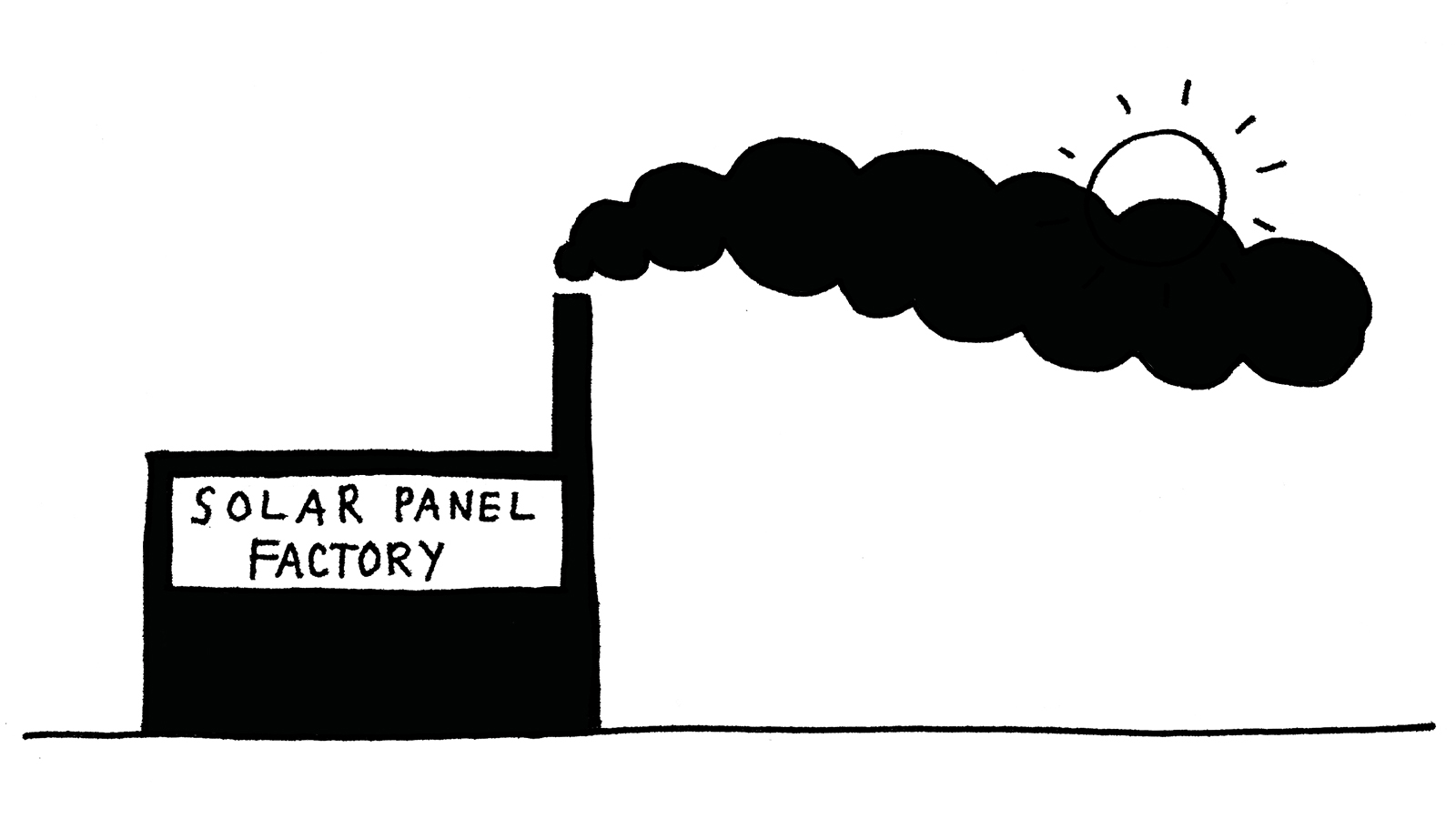You want to save the world, but you still want to power that iPad, right? And you want to do it all on a budget? China’s got your back then, right? That’s the place, after all, where they’re cranking out the cut-rate solar panels. Well, not so right, according to a new study by Northwestern University and the U.S. Department of Energy.
Funny thing: It takes a lot of energy to turn silicon into solar panels, and if you get that energy from fossil fuels like coal, and inefficient coal plants at that, your carbon footprint starts to look like a sasquatch after he stepped on a bee. (Did I mention bigfeet are allergic to bees? Totally true as far as I know.)
Take it away Louise Lerner at Argonne National Laboratory:
The team performed a type of systematic evaluation called life cycle analysis to come up with these hard data. Life cycle analysis tallies up all the energy used to make a product—energy to mine raw materials, fuel to transport the materials and products, electricity to power the processing factory, and so forth. This provides a more accurate picture of the overall energy consumed and produced and the environmental impact of making and using a solar panel.
Assuming that a solar panel is made of silicon—by far the most common solar panel material—and is installed in sunny southern Europe, a solar panel made in China would take about 20 to 30 percent longer to produce enough energy to cancel out the energy used to make it. The carbon footprint is about twice as high.
The biggest reason is that China has fewer environmental and efficiency standards for its factories and plants and generates more electricity from coal and other non-renewable sources, the authors said.
“It takes a lot of energy to extract and process solar-grade silicon, and in China, that energy tends to come from dirtier and less efficient energy sources than it does in Europe,” said Argonne scientist and co-author Seth Darling.
So if you’re setting up your solar panels in Southern Europe, using Chinese solar panels doubles your carbon footprint over home-grown solar. And while the life cycle analysis factors in shipping the raw materials to the factories, it doesn’t take into account the green cost of shipping the panels halfway around the world. That ain’t cheap!
Turns out when you’re planning to harvest the rays of our distant neighbor the sun, we’re glad you’re thinking globally, but as is true with your veggies, you’d better buy locally.




